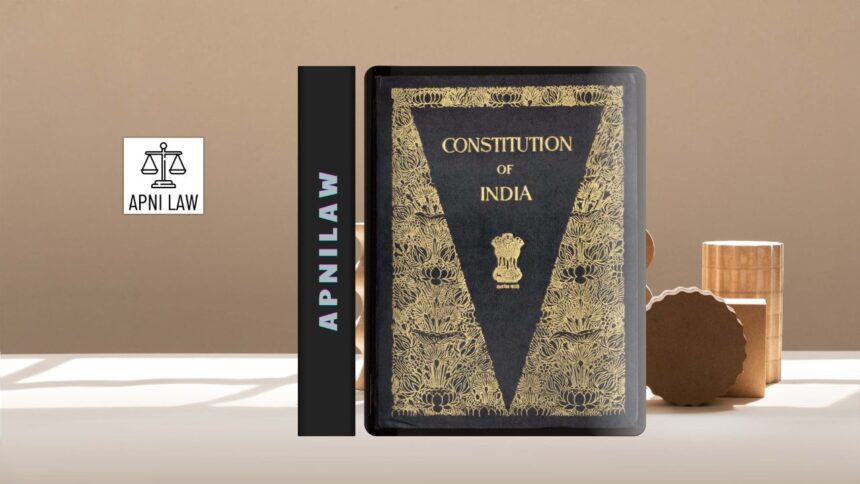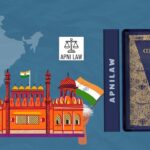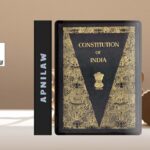The Indian Constitution begins with a significant declaration. Article 1 states, “India, that is Bharat, shall be a Union of States.” This expression reflects the federal spirit of the Constitution while at the same time emphasizing the unique centralizing tendency built into its framework. The phrase has remained central to India’s federalism debate. Unlike classical federations like the United States, India presents a model that combines federal features with strong unitary provisions. This balance reflects the vision of the framers who wanted to preserve unity and integrity while also recognizing regional diversity.
What Does “Union of States” Mean?
The phrase “Union of States” has deep constitutional and political significance. It signals that India is not an association of states created by an agreement or treaty. Instead, it is a single political entity formed by the integration of provinces under British India and princely states that acceded after independence. Dr. B.R. Ambedkar clarified in the Constituent Assembly that the word “Union” was chosen deliberately. He argued that India’s existence does not depend on the will of the states. No state has the right to secede from the Union. The country remains indestructible even though its internal boundaries may change.
This interpretation underlines the permanent character of Indian unity. While states are important components of the federation, their existence flows from the Constitution, not from their own sovereignty. By using the term “Union” instead of “Federation,” the Constitution conveys that India is a single, inseparable whole, where the unity of the nation overrides claims of regional independence.
How Did the Federalism Debate Shape Article 1?
The Constituent Assembly extensively debated the nature of Indian federalism. Members considered both federal and unitary models. The global context also influenced their discussions. The trauma of partition and the threat of separatist tendencies convinced many leaders that a strong Centre was essential. While they acknowledged the need for federalism to accommodate diversity, they feared excessive autonomy might weaken the nation.
Dr. Ambedkar and other leaders emphasized that India would function as a federation under normal conditions. The states would exercise powers listed in the Constitution, and their elected governments would manage local affairs. However, they also introduced provisions allowing the Centre to assume unitary powers during extraordinary circumstances. Emergencies, failures of constitutional machinery in states, and national crises were specific situations where central control would override state autonomy. Thus, the federalism debate produced a model that is federal in design but unitary in spirit.
How Does India Differ from Classical Federations?
Unlike the United States, where the federation was created by independent states signing a treaty, India’s federal structure originated from a sovereign Constituent Assembly. The division of powers between the Centre and states in India does not come from any mutual agreement but from the Constitution itself. This distinction highlights why the Indian model cannot be classified as a traditional federation.
The framers wanted to ensure that India remained united under one constitutional order. States could not claim sovereignty or withdraw from the Union. Even the power to reorganize states or alter their boundaries lies with Parliament, not with the states themselves. This arrangement reflects a centralizing tendency absent in federations like the United States or Switzerland. The concept of India as a Union of States is thus unique in its origin and functioning.
What Are the Key Constitutional Features of the Union?
The Constitution identifies states and their territories in the First Schedule. Articles 2 and 3 empower Parliament to admit new states, alter boundaries, change names, or even merge states. Importantly, these changes do not require the consent of the concerned state. Parliament only needs to seek the views of the state legislature, but it is not bound by them. This arrangement again reflects the supremacy of the Centre in shaping the federal map.
India’s federal structure also places lawmaking and financial authority largely in the hands of the Union. The Union List contains subjects of national importance, while residuary powers also rest with the Centre. The financial system ensures that the Centre collects and distributes the bulk of revenue, leaving states dependent. Emergency provisions further tilt the balance in favor of the Centre. When a national or state emergency is proclaimed, the Union government assumes greater control, limiting the role of states. These constitutional features demonstrate that India’s “Union of States” emphasizes central sovereignty alongside federal arrangements.
How Does Federalism Operate in Practice?
India’s federalism has witnessed constant negotiation between the Centre and states. While the Constitution grants autonomy to states in many areas, conflicts arise frequently. Disputes about financial allocation, use of Article 356 to impose President’s Rule, and the powers of Governors often bring federal tensions into the spotlight. States demand greater autonomy in matters like taxation, law enforcement, and resource management. At the same time, the Centre insists on maintaining authority to ensure national uniformity and security.
Various commissions have examined these tensions. The Sarkaria Commission, set up in the 1980s, recommended measures to strengthen cooperative federalism. It advised against the misuse of Article 356 and suggested more consultation with states in central decision-making. Later, the Punchhi Commission also stressed cooperative mechanisms. Yet, in practice, central dominance continues to shape Indian federalism. Recent developments, including the implementation of Goods and Services Tax (GST) and central legislation on state subjects, have renewed debates about federal balance.
Why Did the Framers Choose a Strong Union?
The framers of the Constitution had clear reasons for emphasizing a strong Union. The experience of partition highlighted the dangers of regional division. Leaders feared that granting states too much independence might lead to secessionist movements. India’s diversity in language, religion, and culture also made central authority essential for unity. The objective was to strike a balance where states enjoyed autonomy in governance, but the Centre retained overriding powers to protect sovereignty and integrity.
Dr. Ambedkar explained that the Union would never be destructible, even if states reorganized or boundaries changed. This assurance was meant to instill confidence in the durability of Indian unity. Thus, Article 1 symbolized the determination of the Constituent Assembly to create a federal system where national integrity stood above regional claims.
How Has Federalism Evolved in India?
Over time, Indian federalism has evolved through judicial interpretation, political practice, and constitutional amendments. The Supreme Court has often acted as an arbiter in Centre-state disputes. It has upheld the principle of cooperative federalism while recognizing the central supremacy built into the Constitution. For instance, in cases relating to President’s Rule, the Court has restricted arbitrary actions by the Centre while still affirming its authority in genuine crises.
Politically, the rise of regional parties since the late 1960s has given states a stronger voice in national affairs. Coalition governments at the Centre have also promoted negotiation between Union and states. At the same time, centralizing policies, especially in economic and security matters, demonstrate that the Union remains the final authority. Federalism in India thus continues to be a dynamic balance between cooperation and central control.
What Challenges Does Indian Federalism Face?
Contemporary debates highlight several challenges. Fiscal federalism remains contested, as states demand greater share of revenue and more financial independence. The role of Governors, often seen as political agents of the Centre, continues to spark disputes. Central laws that override state legislation on agriculture, education, and labor have also triggered protests. The abrogation of Article 370, which removed the special status of Jammu and Kashmir, has become a landmark moment reflecting central dominance over states.
These challenges underline the tension between the constitutional vision of a Union of States and the realities of central control. Commissions, court rulings, and political negotiations will continue to shape the balance of power.
For any specific query call at +91 – 8569843472
Conclusion
Article 1 defines India as a “Union of States,” capturing the unique vision of the Constitution. It symbolizes federalism while emphasizing the permanent unity of the nation. Unlike classical federations formed by treaties, India’s federation arises from a sovereign Constitution that grants the Centre overriding authority. The federalism debate continues, but the guiding principle remains the same: unity with diversity. The Union stands indestructible, and states exist within its framework. This model has preserved India’s integrity for decades while allowing federal practices to evolve. As political and legal debates continue, the meaning of India as a Union of States remains central to understanding its constitutional and democratic journey.








